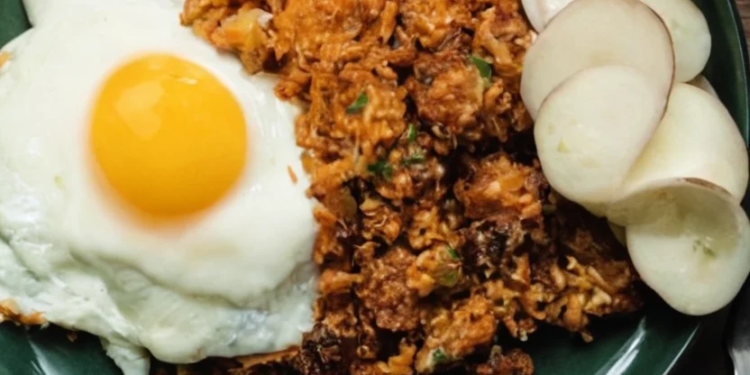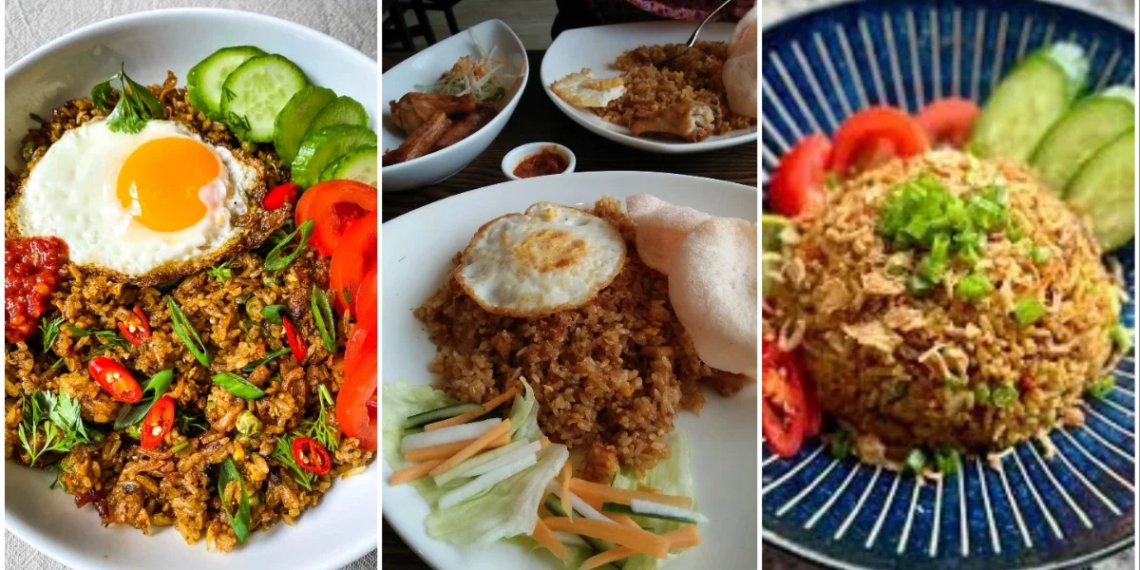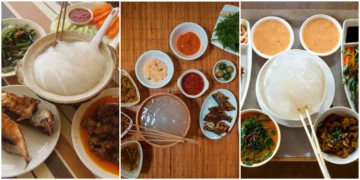Indonesia is internationally recognized for its different cultures, spices, and wide range of foods, making it a paradise for every food lover. One food that Indonesia has, the “Nasi Goreng,” is what we would best describe as their national treasure. Nasi Goreng literally translates to fried rice in Indonesian, but differs in meaning from what it is actually served as. It is a beacon of civilization in home cooking, street food, and reflects the creativity of Indonesian people. As each wok is prepared, all forms of sweet, savory, and spicy mixes to not only create a delicious dish, but also comfort food for many people across Indonesia.
Why is Nasi Goreng the Best Food of Indonesia?

There are myriad reasons as to why Nasi Goreng is at the top of pie list of food dishes in Indonesia. At the very fundamental level, Nasi Goreng is an intersection of simplicity and complexity all in one. The foundation of the meal is re-purposed rice from the previous day’s meal, and then it’s magically turned into a feast by skillfully adding a melange of spices, sauces, and aromatics. There is also an added pleasure to the dish from the texture of the rice, with the soft and delicate portion plus the caramelized bits that is crisp and tender. Along with rich and multi-layered sweet, savory, and spicy sauce, the fusion of the sweet soy sauce (kecap manis), sambal (chili paste), and a drizzle of shrimp paste brings forth balance to the national treasure in every mouthful.
Besides the foundational cultural aspect, Nasi Goreng stands as one of the most accessible meals in Indonesian society as it can be consumed at any time of the day, morning, afternoon, or evening. It indeed connects the culture, as this meal is intricately bound with the people’s way of life. Be it a simple home setting or a lavish ceremony, the meal captures the spirit of Indonesian unity, ingenuity, and gracious generosity.
Ingredients of Nasi Goreng (Best Food of Indonesia)
- Rice: The most important aspect of preparation is the pre-cooked rice, which in this case should be leftover. Subsequently, long-grained rice varieties will work best for Nasi Goreng as it a light, fluffy texture.
- Kecap Manis: This ingredient is one of the cornerstones of Indonesian cooking. With thick, molasses, sweet soy sauce adding characteristic richness along with sweetness to the Nasi Goreng, alongside shrimp paste terasi will also deepen the taste.
- Aromatics: Nasi Goreng is also prepared with finely chopped garlic, ginge,r and moet onion shallots. This deepens the rice mixture and adds another layer of sweetness as it is fried alongside other foods.
- Chili and Sambal: Another necessary ingredient is ground fresh chili or the popular sambal oelek. Spice levels can also be turned down a notch if required.
- Shrimp Paste: Locally known as terasi, this ingredient serves the purpose of enhancing the overall taste of Nasi Goreng.
- Common protein and vegetable ingredients are sliced chicken, prawns, and beef, along with carrots and peas, and bell peppers. Another common topping is fried eggs, which offer creaminess and richness to the dish.
- Optional garnishes include fried shallots, fresh-cut Cucumbers, wedge-cut Tomatoes, and prawn crackers.
Prepare Nasi Goreng (Best Food of Indonesia)
- Prepping the Rice: It is best to get the rice ready at least a day prior, putting it in the fridge. Refrigeration helps firm up the grains, allowing for easier frying. Before the cooking process begins, it is crucial to loosen clumps.
- Sautéing the Aromatics: Establish a medium flame under a large wok or a heavy-bottomed pan, then pour a suitable quantity of oil. Introduce finely diced shallots alongside ginger and garlic. Stir for a while and allow the aromatics to soften and start developing a brownish color. This stage is non-negotiable because the base aroma will be the essence flavoring the entire dish.
- Adding the Flavor Base: When the aromatics are done, add a tablespoon of shrimp paste (terasi) and cook it for a bit to release its flavoring. Add fresh chili/sambal next to the volume to modulate the hotness. Make sure to mix all these parts well before progressing to the addition of rice.
- Frying the Rice: The heat should be increased to medium-high, and the leftover rice is added to the work. Gently stir the rice with the aromatic mixture until every grain is coated. To season the rice, add sweet kecap manis for the desired color and taste. At this point, any pre-cooked proteins like sliced chicken or prawns and veggies like carrots and peas can be added.
What Components of Nasi Goreng Stand Out?

Nasi Goreng has its uniqueness for many reasons. Its charm lies in its versatility, numerous regional variations offer an opportunity for creativity while the base recipes stay the same. Every iteration of Nasi Goreng, from the spicier versions in Bali to the more subtly flavored renditions in Java, reflects local tastes and culture. Its use of kecap manis distinguishes it from other fried rice dishes in the world. The fried rice now has a distinguishing sweetness alongside a deep caramel color that makes it easily identifiable.
Nadi Goreng, in addition to being a dish, is also a social experience. They invite everyone to a communal feast which celebrates the abundance of both land and seas, in markets catering to tourists, as well as in family-run run inexpensive restaurants, a plate of Nasi Goreng is a call to share. This provides a strong unifying nature, helps bridge deep divides created by generations, cultures, and in a nutshell, spreads across rapidly uniting Indonesia and the rest of the world.
History of Nasi Goreng (Best Food of Indonesia)
The traditional Hawaiian stir-fry rice absolutely topped with seasonings and spices, did not appear out of nowhere. Like most foods all over the world, Nasi Goreng also has its origins rooted in history. Nasi Goreng was modified by the addition of Indian, Middle Eastern, Algerian, and even Chinese spices and techniques.
Nasi Goreng has also gained the merit of being one of the most notable foods to represent Indonesian culture. It is quite an achievement when you think about the evolution of Indonesian cuisine throughout the decades. Nasi Goreng has shown how versatile Indonesian food can be. From plain everyday food to fine dining hot plates, Nasi Goreng represents it all.
Additional Genuine Indonesian Dishes
- Rendang: A western Sumatran beef curry known for its intense flavor and tender, melt-in-your-mouth beef texture.
- Soto: A hearty dish that consists of a warm aromatic soup with chicken or beef, turmeric, ginger, and lemongrass.
- Bakso: A favorite comforting dish in Indonesia that consists of noodles, savory meatballs, vegetables, and a light broth.
- Gado-Gado: A vibrant salad that consists of steamed vegetables, tofu, and boiled eggs, topped with peanut sauce.










Discussion about this post